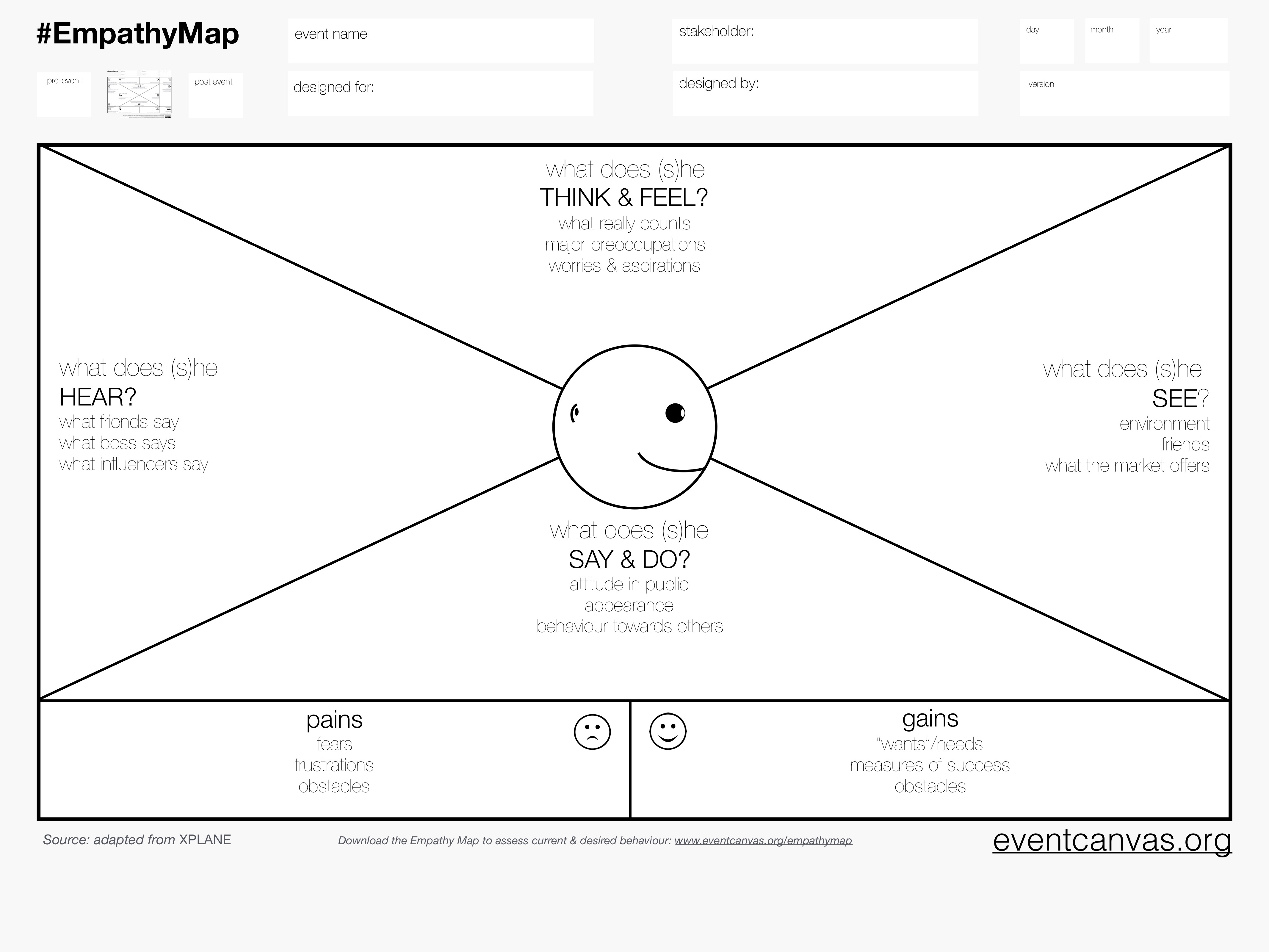Marga Groot Zwaaftink is founder of Commgres and has been active in the event industry for over 20 years. She loves to share her knowledge with others and teaches the #EventCanvas method as a guest lecturer at Avans Hogeschool. For “Keer Diabetes 2 Om” (an event focused on diabetes) she regularly used Momice event software, and noticed that synergy can be created between the method and the software. In this blog we will explain how.
What is Design Thinking?
You may have heard of Design Thinking before: it is a method in which the perspective of the attendee is central and a team comes to quick solutions in a creative way. The #EventCanvas applies Design Thinking to events. This methodology involves all stakeholders, from event manager to director, exploring and collecting their interests. This collection of interests forms the basis for the event concept. This way, all stakeholders feel ownership over the concept. This contributes to the success of the event.
Three phases: Change, Frame and Design
Design Thinking consists of three phases: Change, Frame and Design. By covering these three phases you will eventually create a creative concept.
- Change: what is the attitude and behavior of the attendees before and after the event - and what has changed? Why do they need your event and what will they be missing if they don’t attend? What knowledge will they gain at your event and who will they meet?
- Frame: what are the preconditions that must be considered when developing a concept? Look at the practical frameworks, for instant the financial framework. What are the costs, what will be the investment, the turnover and the revenues.
- Design: what should the participants experience and learn to ensure change in behaviour? Note: only if you have taken these steps, you can start looking at the details of your event.
Claim time for your design
You now know what the phases Change, Frame and Design imply, the question arises: how much time to spend on each phase? Answer: invest 1% of the total time investment of your participants. An example: Suppose you have an 8-hour conference for 200 participants. Including travel time this adds up to 10 hours per participant. The total time investment of your participants is 10 x 200 = 2,000 hours. Your 1% time investment for concept development comes down to 2,000 / 100 = 20 hrs.
Know your target audience
In order to develop a good concept, you need to know who will be in the audience. Many organizers tend to organize a New Year's reception for 'everyone' and send a general mail to a list of 1,000 people.
The problem with focusing on ‘everyone’ is that in the end ‘no-one’ will feel addressed - and your event loses the personal touch - and have less effect.
Ask yourself: for whom are you organising the event? Try to address all your target groups as specifically as possible. You can do so by dividing your contacts into different groups. You can use a Stakeholder Analysis to do this.
Suppose you identified 5 different target groups - sales, marketing, management, IT and HR. Address them separately, using their own email and tone-of-voice, focusing on their specific needs. Use previous registration choices, type of tickets (early-bird, regular, partner or VIP) and workshops they will attend at your event to make the communication even more personal.

- You can download the Event Model Canvas for free.
How do Momice and EventCanvas support each other?
Momice's software can play a role in every phase of the EventCanvas Method:
- Change: Among other things, the 'pain', goals and expectations of your attendees are examined. With an event survey you can measure which objectives have (not) been achieved, before and after the event. The outcomes influence your event website and registration.
- Frame: You determine which elements your event should contain - and in which order you present them. Make sure your event website is live on time! So you can focus on the content of your event.
- Design: Momice software shows the results of your event: the website, mail, ticket and survey statistics are presented in an easy overview. How many invitees have registered for the event after the mailing? How many tickets have you sold? And what is the NPS score of your event?
Conclusion
Do you notice you received less responses than expected, despite following the above steps? You can always make adjustments during the communication process! Do not do this just by waiting or sending a (too) general mail to your invitees. But test what works better: which title of my mail has the highest open rate?


